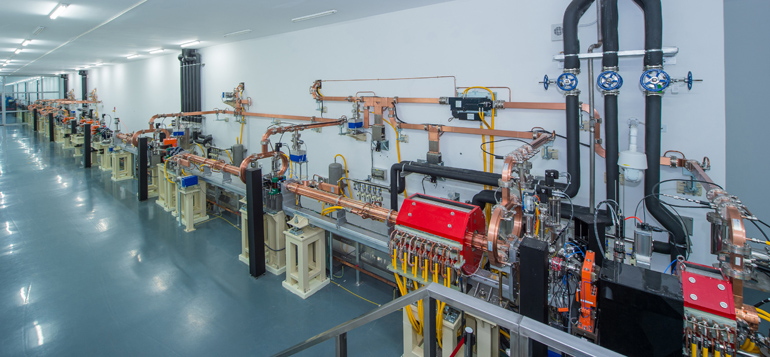

China is joining the elite club of countries that have equipped researchers with free electron lasers (FELs), the potent source of high-energy photons. The Dalian Coherent Light Source, whose completion was announced today in Beijing, has a twist that makes it unique: it is the only large laser light source in the world dedicated to the particular range of short-wavelength light called vacuum ultraviolet, which makes it “a new tool for the detection and analysis of molecules undergoing chemical reactions,” says Alec Wodtke, a physical chemist at the Max Planck Institute for Biophysical Chemistry and the University of Göttingen in Germany.

The Dalian Coherent Light Source (Photo by CAS)
Scientists around the world have rushed to build FELs over the past decade because they produce vastly brighter light, in shorter pulses, than synchrotrons, the particle accelerators that have been the workhorses of protein crystallography and cell biology and materials science. In synchrotrons, electrons go whizzing around a storage ring a kilometer or more in circumference. As their paths bend, the electrons throw off photons that are formed into beams.
In contrast, FELs fire electrons from a linear accelerator into an undulator, in they are pushed and pulled along a sinuous path by magnets of alternating polarity. As the electrons round each bend, they produce photons. Interactions between the electrons and the accumulating photons as they travel through the undulator generate coherent laser light (Science, 10 May 2002, p. 1008).
Most of the FEL user facilities now operating in Europe and the United States produce “hard” x-ray laser beams, with wavelengths down to 0.1 nanometers, ideal for studying crystallized proteins and other solids. But the beams are so powerful “they break up molecules” in gases, says Yang Xueming, a physical chemist at the Chinese Academy of Sciences’ Dalian Institute of Chemical Physics, which hosts the new machine. A laser in the vacuum ultraviolet range—the Dalian facility will cover 50–150 nanometers—“has a soft touch,” he says, making it “the best way to detect molecules and atoms in a gas.” He expects researchers to use the FEL pulses to probe what happens during fuel combustion, how biomolecules behave in gases, and how reactions proceed at solid-gas interfaces. Some experiments could have a very practical payoff, he says: a better understanding of how noxious aerosols—a component of smog that plagues cities like Beijing and New Delhi—form and degrade in the atmosphere.
Wodtke is getting in line to use the facility. He is negotiating an agreement with CAS under which he and his Max Planck colleagues can work at the Dalian light source. The project’s promoters “were very clever” to recognize the gap in FEL capabilities, he says. “I am very enthusiastic about it.”
More Chinese FEL facilities are on the way. Wang Dong, an accelerator physicist at the Shanghai Institute of Applied Physics in China, which was a partner on the Dalian project, says the institute’s new “soft” x-ray FEL produced its first light last week and expects to open to users in about two years. Now, the Shanghai institute is planning China’s own hard x-ray FEL.
Source: Science